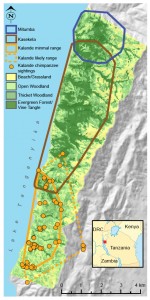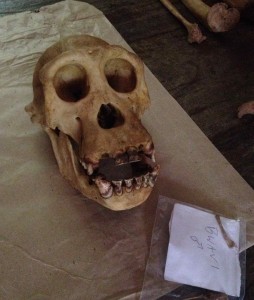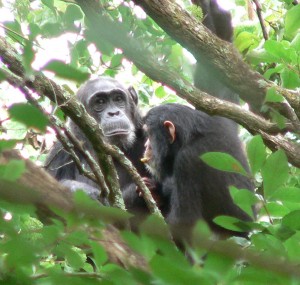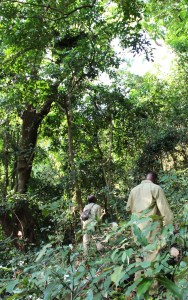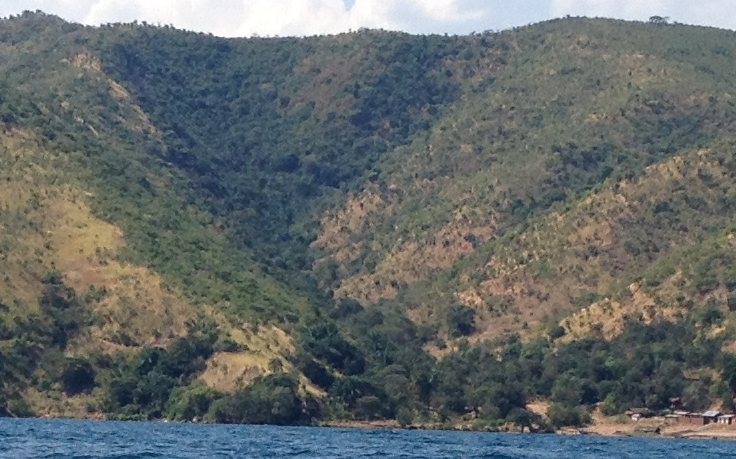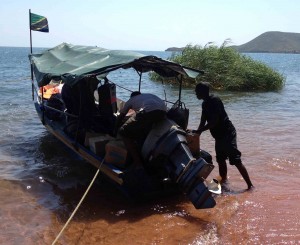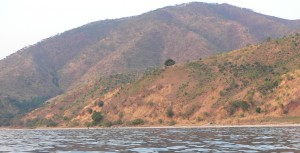Watching Darren Aronofsky’s film Noah makes me wonder: What gives this story such enduring appeal? It is scientifically implausible in all sorts of fascinating ways. The religious implications, if taken seriously, are deeply disturbing. And yet the story retains the mythic power to raise millions of dollars for its retelling, not just in Hollywood, but also in Kentucky.
In July, just a few months after the Noah film premiered, the state of Kentucky approved $18 million in tax breaks to support the building the Ark Encounter, a replica of Noah’s ark as interpreted by the Young Earth Creationist group, Answers in Genesis. Like its sister institution, the Creation Museum, the Ark Encounter will be a perverse sort of anti-museum, dedicated to ignorance and misinformation. What is it about Noah’s story that inspires such dedication? Why would people of faith be willing to put such stake in a story for which there is no evidence whatsoever in history, archaeology, genetics, or biogeography, and which is so deeply implausible on the grounds of basic physics and planetary science?
As a kid, the Noah story was one of my favorite Bible stories – along with the Garden of Eden and Jonah and the Whale. These were among the few Bible stories that featured wild animals, rather than boring barnyard animals like sheep and goats. Sunday school handouts and children’s Bibles showed the parade of animals peacefully lining up to enter the ark. Curiously, people always seem to illustrate this story mainly with animals from Africa, rather than Mesopotamia, where Noah is usually thought to have lived.

For example, when my son was born, Mom gave us a set of Noah’s ark bowls and plates, which have been favorites of all our kids. This Ark has mostly African animals: a pair of giraffes looking out of the upper windows, a pair of African elephants, a pair of zebras, and a green bird that could plausibly be interpreted as an African green pigeon. Animals that could have lived in Mesopotamia include a bear, a pair of cats that seem meant to be leopards (or lynxes), two rabbits, a squirrel, and a pair of white geese. A pair of raccoons have also wandered in from North America.
Of course, if the Flood was global, than animals from all over the world should be there, but the African focus is interesting to me. Maybe Noah really lived at the foot of Mount Kilimanjaro, rather than Mount Ararat?
Growing up, Mom took us to church almost every Sunday. Dad came along to church twice each year, on Christmas and Easter, but otherwise spent Sunday mornings working on electronics in the basement or fixing things around the house. At our church near the corn and soybean fields at the edge of town, we sat in long wooden pews. Mom sang alto on the old Lutheran hymns, which the congregation sang in four-part harmony, accompanied by an electronic organ, which filled the sanctuary with magnificent sound. Pastor stood at the front of the church in his white robe, leading the Psalms and liturgy in a clear high tenor, solemn melodies in strange minor modes. From Pastor’s sermons, I gained the impression that Martin Luther (or was it Martin Luther King?) had nailed his 95 theses to the door of our very church, which puzzled me greatly, as the door of our church was glass.
I grew up reading both the Bible and dinosaur books, with no inkling that there was any conflict between these two sets of information. The Bible stories were presented as factual, not just in Sunday school, but everywhere. Network television presented Biblical epics like The Greatest Story Ever Told and Jesus of Nazareth in much the same way that they presented mini-series like Roots and Holocaust: fictionalized presentations of real events. Movies depicted efforts to find Noah’s Ark on Mt. Ararat as a reasonable quest, which (based on tantalizing clues!) may have already succeeded.
I remember standing on the screen porch as a kid, five or six years old, singing a Bible school song about it raining 40 days and nights for the Flood. When I noticed Mom was in the room I stopped singing, embarrassed at having been heard, but puzzling over the lyrics. I asked Mom how many days it rained for the Flood, and she said, “Well, like the song says, I suppose.” That’s what it said in the Bible, so it must be true.
I read the Old Testament and was fascinated by the lists of the begats. You could connect these ages up and come up with an age of the Earth! I was pleased when I came across a giant family Bible with the dates right in there, based on Bishop Ussher’s calculations. The date of Creation, 4004 B.C., was a bit troubling, since I knew from my dinosaur books that the world was much older than that.
As I got older, I started noticing more and more the contrasts between different ways of looking at the world. Pastor one day mentioned in a sermon, “I will never understand how you can put green grass in a brown cow and get white milk.” He meant this as an illustration of the miraculous ways of the Creator. But this seemed to me an easy problem. Grass is green because it has chlorophyll. There’s no chlorophyll on the surface of cows, or in milk, so of course they’re not green. And cows are brown (or whatever other color) because of the pigments in their hairs. Why is milk white? I wasn’t sure at the time (maybe because of suspended fats?) but this seemed an answerable question to me, not a mystery.
I must have been in about sixth grade when I began to lose faith in the Ark. I was drawing a picture of it, and wanted to draw it to scale. I checked Genesis for the dimensions, and started thinking about how much room all the world’s animals would really need. That was the first time I remember doubting that the Ark really could have held all those animals. Tugging at that thread threatened to unravel the entire tapestry.
In Junior High, I attended confirmation class, and participated more actively in church, for varied reasons, including a growing obsession with the fantasy world of Dungeons and Dragons. My friend Tim and I were in the same confirmation class, and we often volunteered to serve as acolytes, which meant we got to wear medieval red robes and play with fire, lighting and extinguishing candles with the long-handled candle-lighter, which was satisfyingly like a medieval weapon.
Tim and I also attended Prayer Share meetings, where I had my first encounter with Young Earth Creationism. Our friend Amy, who went to a different church, insisted that before Noah’s flood, it didn’t rain. This was based on a passage in Genesis stating that Eden was watered with a mist. I argued with her that this couldn’t be. If a mist came and watered the land, then the water would evaporate, form clouds, and it would rain. There’s nothing miraculous about rain; it just happens. And yet Amy insisted that, based on this text, there was no rain before the Flood.
I was mystified by this sort of argument, yet as I learned on moving to Indiana, where Young Earth Creationists are thicker on the ground, this is a typical line of Creationist argument. And while I find the slipshod use of science in these arguments maddening, I have a certain amount of sympathy for Biblical literalists. They take the Bible seriously, and make an effort to follow through with the implications of that. If the Bible is the Word of God, and every line is true, then Noah must have really lived and done all the things that the Bible says he did.
The Ark Encounter is the logical next step from the Creation Museum. If Darwin is a problem for your religion, then so are his predecessors, the geologists whose findings inspired him. In 1830, nearly thirty years before Darwin published the Origin of Species, Charles Lyell published his Principles of Geology, which persuasively argued that geological features are the result of natural processes acting locally over many years, rather than the outcome of a single global flood. Darwin carried the first volume of Lyell’s with him when he sailed around the world on the Beagle. When Lyell published the second volume of his book, Darwin eagerly picked it up in South America, where he collected fossils, examined geological formations, and shot lots of birds. These volumes profoundly affected Darwin’s views, describing a world where natural processes acting gradually over many millions of years create the features of the earth’s surface: mountains, hills, layered beds of sedimentary rock, uplifted and faulted and infiltrated by magma.
Lyell was a devout Christian, but he argued vigorously against using the Bible as a science book. Instead, he argued we should look to the Earth itself for evidence of the Earth’s history. Lyell’s arguments proved persuasive, leading the the founding of geology as a proper science, one which is central to an industrial civilization that is deeply dependent on good guidance for where to look for things in the ground that we need, such as iron, coal and oil.
Even though the last serious scientific debates about Flood Geology ended nearly two centuries ago, I can’t help myself from dwelling on other scientific implications of the Noah story. What would it take to make a world wide flood possible, for example? And what biological evidence would we see if such a flood had happened?
Maybe this comes from having a father who is an engineer. Growing up, conversations with Dad often ended up with him sketching diagrams on scraps of paper, working out calculations in scientific notation. So I find myself doing similar things, such trying to calculate just how much water would be needed for the Flood.
According to Genesis, the Flood covered the highest mountains. The highest mountain on the earth, Mount Everest, is 8.84 km high. The radius of the Earth is about 6,378 km. To calculate how much water you would need to cover the whole planet to the top of Everest, you just need to calculate two spheres: the volume of the Earth1.
A recent study of mutation rate on the Y-chromosome examined men in China who descended from a common ancestor 13 generations ago (Xue et al., 2009). They found 4 differences between the Y-chromosomes of these men, and estimated the overall mutation rate to be 3 x 10-8 mutations per nucleotide per generation. There are about 1.02 x 107 nucleotides in the part of the Y-chromosome that they examined. The average man’s Y-chromosome should therefore differ from Noah’s by about (3 x 10-8 mutations per nucleotide per generation) (174.5 generations)(1.02 x 107 nucleotides) = 53 mutations. Which, out of 10 million nucleotides, isn’t very many. So most men on the planet should have a Y-chromosome that is nearly identical to Noah’s. But geneticists find far more differences than this. One recent estimate of when the last common ancestor of all human Y-chromosomes (“genetic Adam”) lived yielded a date of 120,000 to 156,000 years ago. This is a lot older than 4,000 years.
And that’s just humans. For the Noah story to be true, every single animal lineage on the planet would have to show evidence of a catastrophically severe population bottleneck in recent history. And of course we see no such evidence.
Another testable prediction of the Noah story relates to biogeography. If the entire planet were populated by animals that Noah saved on the Ark, then we would expect to see some very striking patterns, based on the dispersal ability of animals. Suppose, as the tradition holds, that Noah’s Ark landed on or near Mt. Ararat in Armenia. Armenia should therefore be the center of global biodiversity. The rest of the world would be populated by animals gradually making their way from Armenia to the rest of the world over the past 4,000 years or so. Some animals, like many bats and birds, would be able to fly long distances and cross rivers and seas. We might therefore expect to see bats and birds worldwide. Other animals, such as many large land mammals, can walk long distances, but cannot cross major barriers such as rivers, seas, deserts, and large mountain chains. Consider elephants, for example. They can travel long distances, and we would expect them to travel far across Eurasia and across the Sinai Peninsula to Africa. Even elephants, though, might having trouble crossing the Sahara, in which case the current abundance of elephants in sub-Saharan Africa poses a puzzle.
But that’s a small puzzle compared to the presence of large land mammals on any land mass not directly connected to Eurasia and Africa. That includes Indonesia, New Guinea, Australia, and the Americas. Bison, wolves, pumas, deer, llamas, and jaguars should be common in the area around Armenia, but they would never reach the Americas.
Many animals, especially smaller animals, and many plants, cannot disperse very far at all. Consider the sloth. Sloths, as their name implies, move slowly. They spend most of their time hanging from trees, eating and digesting leaves. Try to imagine Mr. and Mrs. three-toed sloth leaving the Ark, exploring the post-flood world of mud and dead trees. What would they eat? How would they travel? How would they ever get from Armenia to Central and South America?
As Darwin discovered on his worldwide voyage on the Beagle, the distribution of animal and plant species around the world only makes sense in light of evolution. Sloths live in South America because their ancestors evolved there many millions of years ago. In the glory days of the Giant Ground Sloths, sloths dispersed out of South America well into North America, but sloths have never spread beyond the Americas.
One could go on and on. It’s shooting fish in a barrel, really, or beating a dead horse, or whatever metaphor of futility you prefer. There are many pages of the Internet devoted to detailing these problems in mind-numbing detail, such as here, and here. This is all really overkill, since the Noah story is clearly just that: a story. And it’s a story that would make sense for a people whose history is entwined with the great river civilizations of Egypt and Mesopotamia, the land between the rivers. The discovery of a flood story in the Epic of Gilgamesh suggests that the Noah story is a close retelling of that older story (or a retelling of a common ancestor of the two tales).
And yet, the Noah story still has enormous broad appeal. Why is this so?
Leaving aside the scientific problems, the Noah story raises all sorts of questions about God. Why would an all-powerful deity do such a bad job of making people that he has to wipe them all out and start again? Was everyone on the planet entirely wicked except for Noah’s family? Surely there would have been some innocent people among the masses of the wicked: young children, if nobody else. If God was unhappy with some men, why didn’t he just zap them? Later in the Bible God repeatedly demonstrates His selective zapping ability: striking Onan dead, for example, or the first-born sons of the Egyptians but not Hebrews. Killing everyone on the planet seems deeply unfair, unworthy of a just God.
So given all this, why does this story still hold such appeal?
As a kid, I suppose I liked the story because it had animals. Noah is a kindly old zoo keeper. What a cool job he has! Looking after all those interesting animals! I’d like to have a boat full of tigers and gorillas. And it’s an adventure story: Noah and his family taking care of all those animals on a boat during a flood.
One thing I liked about Aronofsky’s Noah was that it brought out something hidden in the Sunday school version of the story: this is a horror story. It’s about death and destruction on a massive scale.
The Sunday school Noah is a righteous man, a skilled carpenter who does what God tells him to, looks after his family, and saves the animals. He is a hero of conservation biology. But Aronofsky brings out much that is deeply disturbing in Noah’s story. What kind of man would shut out the world from the Ark, saving his immediate family and some animals, but nobody else?
Peter Chatterway argues that here Aronofsky is following a long tradition in Jewish commentary. For example, Rabbi Shmuley Boteach argues that Noah is a deeply flawed figure:
Noah is not a hero in Jewish lore. The Bible says that Noah was a righteous man “in his generation.” He was only a righteous man compared to the others who were far worse than he.
Now, why wasn’t he righteous? Because righteousness is all about what you do for your fellow man. And Noah does NOTHING for his fellow man. He doesn’t care, he has no compassion. He executes God’s commandment to the letter. So when God says “I’m going to kill everybody,” Noah says, “will you save my skin? Oh, I get an Ark? Okay, fine.”
[Noah] failed in the greatest mission of all. He failed to protect human life. And failed to fight with God when he wanted to take human life. He refuses to wrestle with God. Noah is a fundamentalist. He’s a religious extremist. God says “everyone will die” and Noah says nothing. But this is not what God wants. God wants people with moxie! God wants people with spiritual audacity! He does not want the obedient man of belief. He wants the defiant man of faith.
It isn’t until Abraham, when God says “we have the rainbow and I promise not to destroy everyone, but I will destroy these two cities Sodom and Gomorah,” Abraham does something audacious. He says “will the judge of the entire Earth not practice justice?” He lifts his fists to heaven! He raises a cudgel to Heaven! This made him the first Jew. A Jew does not just accept a divine decree, he does not just bow his head in silent obedience.
The word “Islam” means “obedience before God” or “submission before God.” Soren Kierkegaard the great Danish theologian sums up Christianity as being a “leap of faith.”
Judaism has no leap of faith. “Israel” means “he who wrestles with God.” You see none of that in Noah. Neither in the Torah or in this film, so in that regard, this movie portrays this very well. No other religion does this, they would see this as heresy. It’s amazing, it’s breathtaking!
The scientific debate about Noah’s Flood ended nearly two centuries ago, with the birth of modern geology. What we have learned since then about the deep history of the Earth is much more interesting and satisfying than the old myths. And yet, the myths still have a hold on our imagination. This may not be a bad thing. The Noah story can help promote an appreciation for our responsibility to life on earth: we must be good stewards of our planet. At the same time, understanding Noah to be a flawed man, a failure in his unquestioning obedience, might help make us better human beings.
References:
Matsumura, S. and P. Forster (2008). “Generation time and effective population size in Polar Eskimos.” Proceedings of the Royal Society B-Biological Sciences 275(1642): 1501-1508.
Xue, Y. L., Q. J. Wang, Q. Long, B. L. Ng, H. Swerdlow, J. Burton, C. Skuce, R. Taylor, Z. Abdellah, Y. L. Zhao, Asan, D. G. MacArthur, M. A. Quail, N. P. Carter, H. M. Yang and C. Tyler-Smith (2009). “Human Y Chromosome Base-Substitution Mutation Rate Measured by Direct Sequencing in a Deep-Rooting Pedigree.” Current Biology 19(17): 1453-1457.
- 4/3)πr3 = (4/3)π(6,378)3=1.087 x 1012 km3), and the volume of a sphere of Earth plus Everest ((4/3)π(6,387) 3=1.091 x 1012 km3). Subtract the volume of the Earth from the volume of Earth plus Everest and you get about 4.5 x 109 km3.
Each cubic km has a million cubic meters, each of which weighs about 1,000 kg, so multiply the volume by a thousand million (109) and you get the total mass = 4.5 x 1021 kg. That’s a lot of water. Scientists estimate that the total mass of all water on the Earth’s surface today is 1.4 x 1021 kg. So Noah’s flood would require over 3 times as much water to be added to the Earth’s surface as is currently contained in all the world’s oceans, rivers and lakes. Where did all that water come from? And when the flood was over, where did it go?
The deeper you dig with this story, the more problems you find. For example, one of the clear predictions from the Noah story is that every population of large animals on the planet should show evidence of having passed through a very tight genetic bottleneck some 4,000 years ago. Human beings were reduced to a population of eight (Noah, his wife, their three sons, and their sons’ wives). Most other animals (except for the edible ones) had a surviving population of just two.
Every man on the planet therefore should be a direct descendant of Noah. Every man should therefore have a Y-chromosome that is nearly identical to Noah’s. Given Bishop Ussher’s timeline, the Great Flood occurred in 2,348 B.C., or some 4,362 years ago. If we assume human generation times of 25 years on average between the births of surviving females, then some 174.5 generations have passed since Noah.
(25 years is a bit conservative; the average time between mothers and daughters in a population of Polar Eskimos was 27 years, and 32 years between fathers and sons (Matsumura & Forster 2008 [↩]


